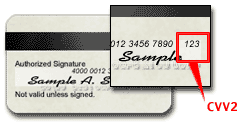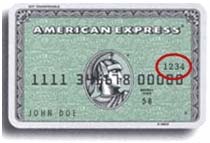Chargebacks / Fraud
A chargeback occurs when a cardholder disputes a charge on his or her credit
card, and the bank that issued the card - not ProPay - reverses the transaction.
Are You Shipping
internationally?
1. What is a chargeback?
A chargeback occurs when a cardholder disputes a charge on his or her credit
card, and the bank that issued the card - not ProPay - reverses the transaction.
The money is taken from your ProPay Account and is credited back to the cardholder's
account. You are then given the opportunity to rebut the chargeback by providing
any documentation that supports the charge. The card-issuing bank then decides
whether or not to honor the charge. If the charge can be honored, the money
will be moved back into your ProPay Account. If the charge cannot be honored,
the money will remain in the cardholder's account.
According to credit card regulations, cardholders should not issue a chargeback
unless it is for one of the following reasons:
- The buyer never received the item(s) he or she purchased.
- The item(s) he or she purchased was damaged when it arrived.
- The item(s) originally listed was different than the item(s) he or she
received.
- The cardholder did not give authorization to the seller to charge the credit
card.
The most common reason for chargebacks in ProPay's system is the last reason
listed above, and appears as:
- No cardholder authorization or
- Fraudulent phone/mail order transaction
This reason usually means that the cardholder did not recognize the charge
on his or her statement. The best way to avoid this situation is to ensure
that your buyers know to expect your e-mail address on their statements, not
your personal or business name.
If a chargeback is issued against your ProPay Account, ProPay's Resolutions
Department will contact you with details on how to rebut the chargeback.
Back to top
2. What is the fee for a chargeback? A non-refundable chargeback fee of $15.00 applies for each chargeback that
occurs.
The chargeback fee will apply even if the chargeback is re-presented successfully
and is reversed.
Back to top
3. How can I prevent chargebacks? Here are some suggestions that may help to prevent chargebacks:
- Address match
If the billing address for the credit card matches the billing address entered
for the transaction, you are less likely to become a victim of fraud. The
AVS result that is displayed after a credit card transaction indicates
how well the addresses matched. Here is a list of most AVS codes and what
they mean:
Code |
What It Means |
X |
Exact street address match and 9-digit zip code match. |
Y |
Exact street address match and 5-digit zip code match. |
A |
Street address match only (zip code does not match). |
W |
9-digit zip code match only (the street address does not
match). |
Z |
5-digit zip code match only (the street address does not
match). |
N |
No street address or zip match at all. |
U |
Address unavailable. Usually means the billing address
was not entered, so a check could not be made. |
R |
Issuer system unavailable. Usually means the address for
the credit card could not be looked up due to problems with the lines
to the issuing bank. |
- CVV2/CID
The CVV2 and CID are three or four digit number located on each card. For Visa®, MasterCard®, and Discover® it's located on the signature strip on the back of the card. For American Express® it's located on the front of the card (see illustration below). You can collect this number and enter it when processing a transaction using ProPay. If the number does not match, you should consider rejecting the transaction.
Visa, MasterCard, and Discover

American Express

- Shipping receipt
Ship merchandise with a carrier who can provide you with the customer's signature
upon receipt, proving they received the merchandise.
- Name on statement
Inform your customers that your e-mail address (ProPay Account username) will appear on their card
statements.
- Easy contact
Use a toll free number for your daytime phone number if possible. Your daytime
phone number will appear on the cardholders' statements, making it easy
for them to contact you.
- Return policy
Disclose your return policy with each transaction. On a signed receipt, put
this disclosure near the signature.
- Customer service
Keep customers satisfied. Ship items and issue refunds promptly.
- Keep good records
Good records will help you dispute a chargeback.
These steps, except for AVS, can be followed for both domestic and international
transactions. ProPay recommends that you take the maximum precaution when engaging
in international transactions because they are more difficult to support if
disputed, and the AVS does not work outside the United States.
Back to top
4. What if I have multiple chargebacks?Multiple chargebacks or a pattern of chargebacks can be grounds for termination
of your merchant account.
Back to top
5. What should I do if I receive a chargeback? If you receive a chargeback, first contact your customer to determine what
the reason was for the chargeback.
Next, contact resolutions@propay.com to
let us know what happened with your customer and inquire about what to do next.
Most often your customer will contact the credit card issuer to let them know that
it was their error and to reprocess the charge.
Back to top
6. Does ProPay provide fraud protection insurance, or escrow
services?
ProPay does not provide any insurance or escrow services. We provide tools
that you can use to protect yourself against fraudulent transactions (AVS and
CVV2/CID), but we do not provide any fraud protection guarantee.
As a merchant, it is your responsibility to document your transactions and
to verify your customers' information (including the customers' addresses using
AVS and cards using CVV2/CID) as you process transactions.
AVS will verify how close the address entered matches the address on file
at the credit card issuing bank. If a customer gives you a shipping address that returns
a poor AVS match, this could be an indication of possible fraudulent activity.
Likewise, a customer who says he or she is in, for example, Ohio, asking you to ship
to Indonesia, this would be another red flag. The CVV2/CID is a good indicator that
your customer has the card in his or her possession.
Back to top
|